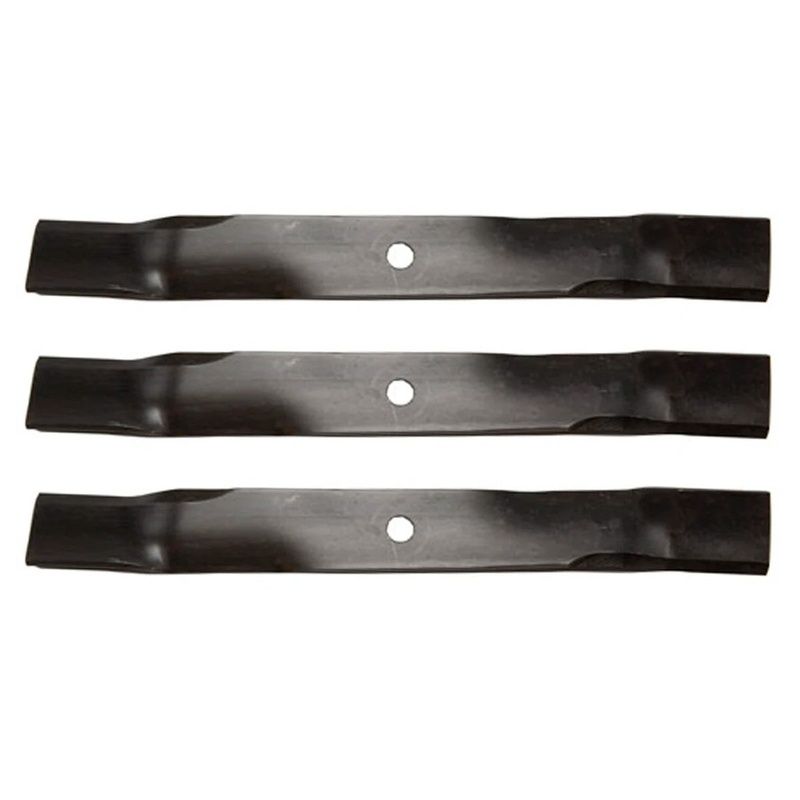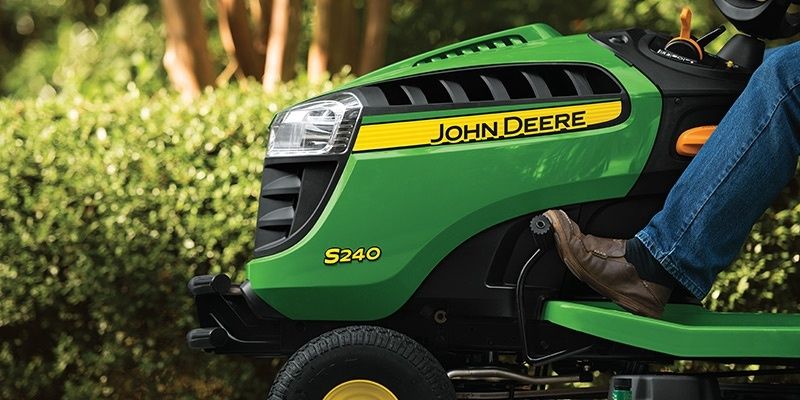
How to winterize a lawn mower
When mowing season comes to an end, it's tempting to store your lawn mower for winter to worry about next year. Do your future self a favor and winterize your lawn mower first. It will save you a ton of time and headache come spring and will keep your mower running like new.
We'll go through the most important steps for preparing your lawn mower for winter and give a few extra tips along the way.
Clean the mower deck
Washing off the dirt and debris from a long mowing season is a good place to start. Hook up a garden hose or wheel out your pressure washer and give your mower a good cleaning. If you're running a John Deere with an Accel Deep, Edge, or High Capacity deck, utilize the wash port on the deck. For tough, dried-on clumps, take a stick or paint stirrer and scrape it off.
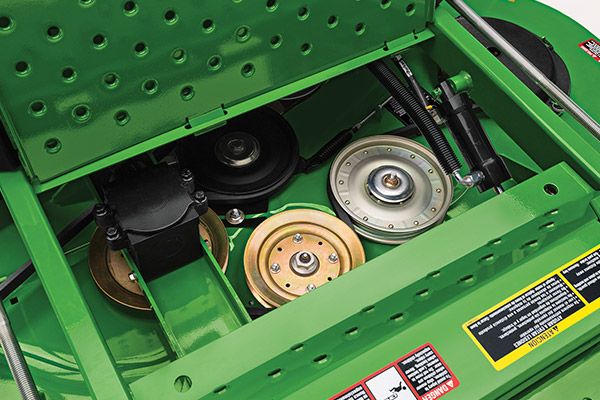
While you're cleaning the deck, go ahead and check if the mower blades need to be sharpened or replaced. It won't matter if they sit over winter, but dealing with it now will save you time next year. If you feel like going the extra mile, level your mower deck and look over the drive belt for wear or cracks.
Drain or stabilize the fuel
Dealing with leftover fuel is one of the most important steps to winterizing your mower. Gasoline that sits for an extended period will begin to degrade and spoil, causing damage to parts of the fuel system and gumming up the carburetor. Plus, when spring rolls around and it's time to run your mower, the engine won't perform as well.
There are two schools of thought about how to winterize lawn mower gas: draining the tank entirely or topping off and adding gas stabilizer. Which method works best for you depends on your circumstances. If you're not sure what to do, refer to the owner's manual and see what the manufacturer recommends for your engine.
Topping off and adding fuel stabilizer
Adding a fuel stabilizer to gasoline can add several months to its life. Filling up the tank and adding some Lucas Oil stabilizer or other additive will be enough to keep the tank fresh for the season. That being said, it's important to note fuel stabilizer should only be added to new gas and will not work properly in old gas.
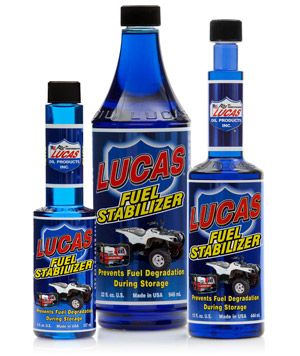
Tip: Any time you fill up a gas can, go ahead and add some fuel stabilizer so you can count on it staying fresh.
You should use this method if you plan to store your lawn mower in a garage or shed. After adding the stabilizer, run the engine for a few minutes so it can work its way through the fuel system.
Draining the fuel tank
If you wrap up the mowing season with only a little bit of fuel left, you're better off to run the tank dry. You should also drain the tank if you plan on storing your mower in the basement. Storing a mower inside with fuel in the tank could be a fire hazard. If your tank is still filled but the gas is getting old, empty it and re-use it elsewhere.
To empty the tank, use a siphon or turkey baster and remove as much gas as you can. Next, run the engine several times until it no longer starts.
If you're winterizing a push mower, tip the mower over and empty the tank into a drain pan. Look on the carburetor for a bolt or drain valve to empty fuel out of it. Pull the starter rope and let the engine run out until it no longer starts.
Tip: Gasoline can go bad within 3-6 months if no stabilizer is added.
Change lawn mower oil and oil filter
Next up, you'll want to take a look at your oil. If you're nearing 50 hours of use since the last oil change, go ahead and change it. When you're finished, let it run for a few minutes so the inside is coated with fresh oil. Check your owner's manual to ensure you're using the correct amount and type of oil.
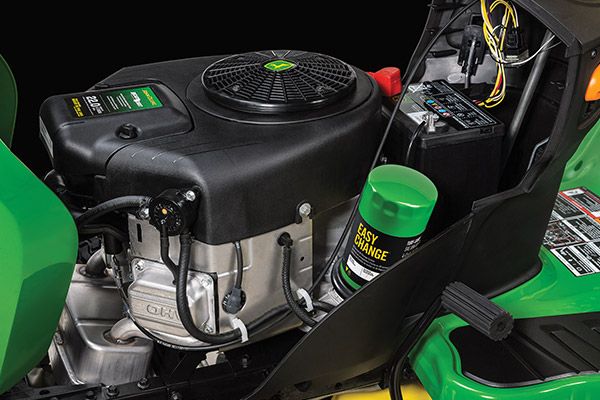
Replace the air filter and fuel filter
Your lawn mower's air filter and fuel filter keep junk from reaching the carburetor. Changing them at least once per season will keep your lawn mower performing at its best. You could save it for next year, but it's better to do it now so you don't forget.
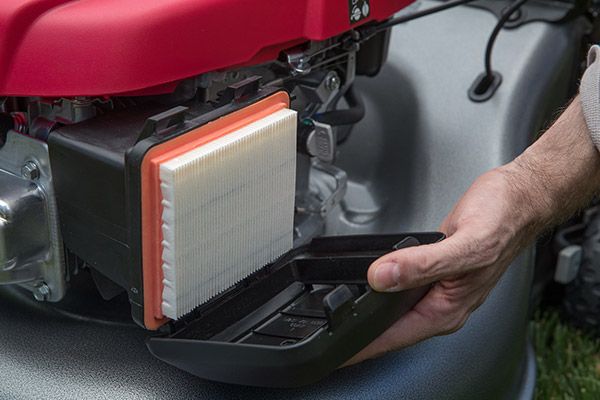
Replace the spark plugs
Bad spark plugs are one of the most common lawn mower issues. Changing your lawn mower's spark plugs is a great way to ensure it fires right up next season. They should be replaced about once a year and only cost a few bucks, so it's a good habit to change them while winterizing your mower.
To replace a mower's spark plugs:
- Disconnect the spark plug lead and clean around the spark plug so no debris fall in the chamber while removing the plug
- Remove the spark plug with a spark plug wrench
- Check the spark plug gap (most spark plugs should come with the proper gap, but it never hurts to check)
- Spray a touch of oil to the cylinder and replace the spark plug, gently tightening until it's snug
- Check the spark plug lead for corrosion (clean or replace it if it's corroded), then re-attach it
Disconnect the battery
If you're winterizing a riding mower or battery-powered lawn mower, disconnecting the battery will help to preserve its power.
To safely remove a riding lawn mower battery, start by removing the negative lead, then unplug the positive lead. With the battery disconnected, you can clean the battery well and check the terminals for corrosion. Go over them with a wire brush to remove corrosion build-up. When you're done, store the battery in a cool and dry environment away from flammables and heat sources.

Storing your lawn mower for the winter
Leaving your mower with an empty tank and/or no battery means it's not going anywhere for a while. Make sure it's parked in a good spot where you won't need to move it for a few months. We recommend storing it inside if possible and throwing a tarp over it so it doesn't collect dust.
Tip: If you're worried about rodents and mice chewing up wiring, lay out some mothballs or traps.
Putting some time in to winterize your lawn mower will pay off when you go to start it next year. If you need help finding parts for your lawn mower, call your local Hutson store or sign up for the Hutson Customer Portal. If you'd rather let our technicians winterize your mower, schedule a service with us.



